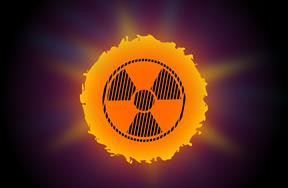China made history this week by turning on a sophisticated nuclear fusion reactor.
China's Hefei "artificial sun" reactor has established a new world record by operating at a temperature of 70,000,000 degrees Celsius for more than 17 minutes.
The Experimental Advanced Superconducting Tokamak is the name given to the "artificial sun."
According to Xinhua News Agency, this record was set on December 30 and is the longest running duration for an experimental superconducting fusion energy reactor.
China observed record high temperatures for continuous periods following its activation. Chinese state media reported that the EAST reactor operated at a temperature five times that of the sun.
The ultimate goal of constructing the artificial sun technology is to provide nearly endless clean energy by simulating natural reactions within celestial bodies.
"The recent operation offers a strong scientific and experimental foundation for the operation of a fusion reactor," said Gong Xianzu, one of the experiment's leaders and a physicist at the Chinese Academy of Sciences' Institute of Plasma Physics.
In May of last year, EAST set a previous record by running for 101 seconds at a temperature of 120 million degrees Celsius.
"In the first half of 2021, we conducted an experiment in which we achieved a plasma temperature of 120 million degrees Celsius for 101 seconds," Xianzu said in quotes by Xinhua.
Nuclear fusion energy generates massive amounts of energy by smashing heavy hydrogen atoms to produce helium, a process that occurs naturally in the cores of stars such as the Earth's sun.
China will conduct the experiment until June as part of the EAST project, which has already cost China more than 700 billion euros.
Nuclear fusion has been dubbed the "Holy Grail" of sustainable energy production, but despite decades of research, it is still a long way from being realized outside of a laboratory.
Nuclear fusion reactors are a pretty complicated concept. The entire premise is predicated on reproducing the physics of the sun.
Artificial suns accomplish this by combining atomic nuclei to generate enormous amounts of energy. Then, scientists are attempting to convert all of that energy to electricity.
Meanwhile, China's reactor team will lend technical assistance to another massive nuclear fusion reactor under construction in Marseille, France.
When completed, this artificial sun will be the largest reactor in the world. The International Thermonuclear Experimental Reactor is its official name (ITER).
Additionally, the United Kingdom intends to construct its own nuclear fusion power station.





